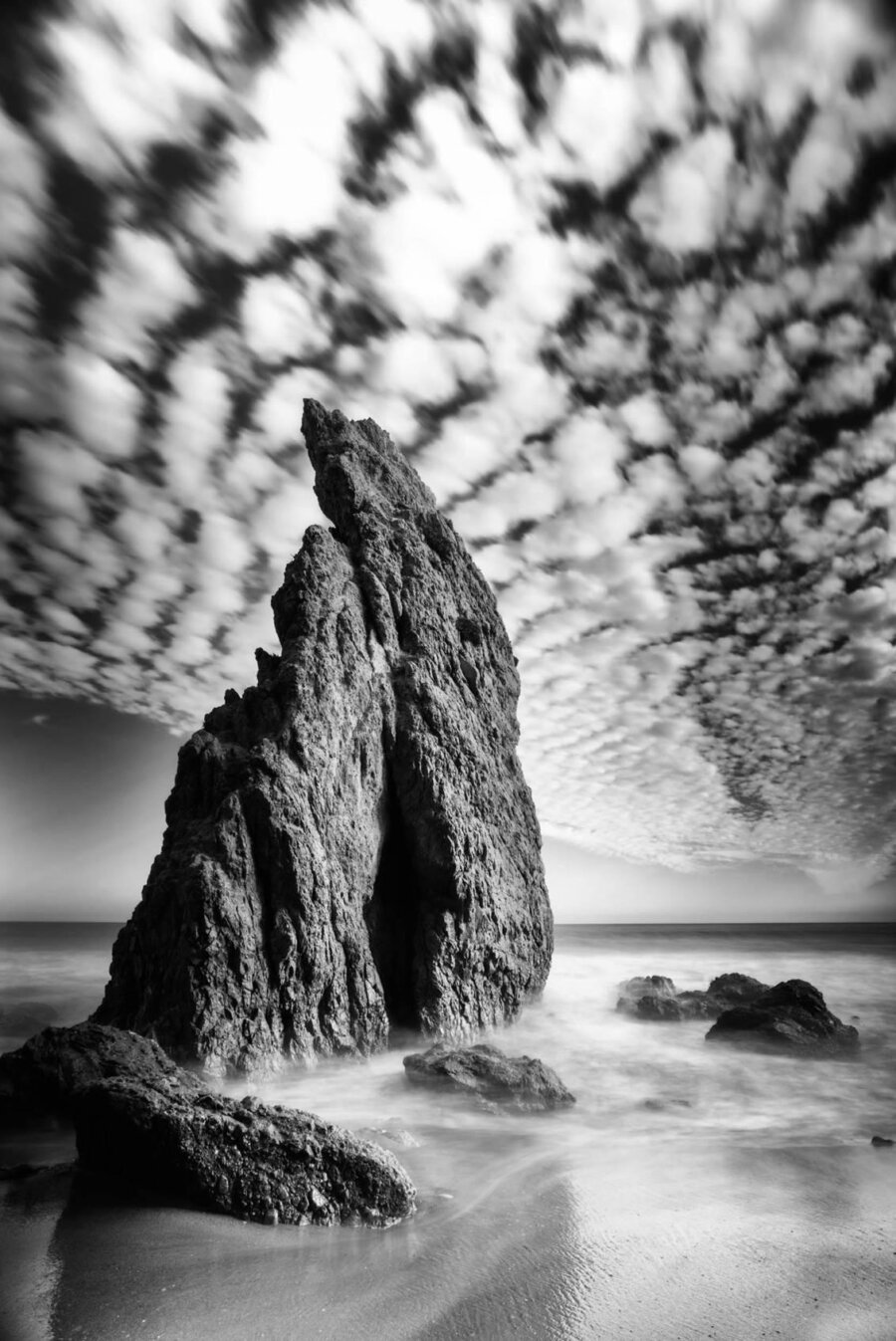Methodology: Composing Landscapes with Andrew Stuart (Premium)
All images by . Used with permission.
Working with black and white often sounds like a restrictive approach to photography; without the option of using color to tell your story black and white forces you to see the world differently and rely on the technical skills that are the underlying foundation of photography. Specifically black & white forces you to understand how to capture light to recreate the world around you.
To get some more insight, we reached out to Leica Photographer Andrew Stuart to break down the elements of composition and take a look at his workflow. Although primarily an editorial and documentary photographer, Stuart tells us that he loves shooting landscapes because he “[loves] the luxury of taking [his] time” and not needing to rely too heavily on gear and autofocus – allowing him to instead connect with his surroundings.

HOW DOES COMPOSING IN BLACK & WHITE DIFFER FROM COLOR LANDSCAPES?
When shooting black and white, color is obviously still a factor but more in a tonal capacity. I’m no longer looking at how individual colors contrast and react with each other, but how all color contrasts against light. Capturing a mood caused by dramatic contrast and interesting lighting become more important factors to a black and white scene versus trying to recreate the literal, obvious beauty of a color scene.
WHAT ARE SOME OF THE COMPOSITIONAL ELEMENTS THAT ARE KEY FOR YOUR STYLE OF PHOTOGRAPHY?
I like to bring a dark and dramatic element into my black and white landscape work. I’m drawn to bold subjects, whether it’s a large rock formation or a striking abstract pattern. Light is always a key compositional element in photography, but when thinking in terms of black and white it becomes more of a tool to create mood and drama, rather than to illuminate and activate color. Shadows and highlights become artistic tools to create their own patterns and perspectives.
When shooting a living subject I’m capturing a moment that will only happen once, but often times when shooting landscape the subject has been photographed many times before. When composing I’m mindful of this; through lens choice, positioning, timing and a bit of luck, I try to come up with a fresh perspective and control a mood.
CAN YOU WALK US THROUGH YOUR PROCESS – SETUP TO PROCESSING (IF ANY)?
My process, gear and setup wise, is usually fairly simplistic. I try to maintain as close to an analog workflow as possible, minimal gear, minimal choices, allowing me to stay as connected with my surroundings as possible. A digital body, an analog body, a couple lenses, a couple filters including red. Sometimes a small tripod for slow shutter work.
For digital post processing I use Lightroom, but since I’m thinking analog while I shoot, trying to avoid the, “fix it in Photoshop” mentality. I would much rather spend more time in the field, in the moment shooting, than at the computer editing.

In a previous life, Stuart graduated from USC with a degree in Marketing and had his eyes set on conquering the Music Business. Upon graduating, Stuart began his career as an assistant to Sharon and Ozzy Osbourne and then went on to manage the Heavy Metal act Slayer. It wasn’t until 2008 that Stuart began to take an interest in photography after an impromptu portrait session with tattoo artist and musician Kat Von D. Since that chance encounter, Stuart has gone on to photograph some of the best acts in Rock n Roll giving fans an intimate look at music’s best. You can find more of his work on his personal as well as on .
